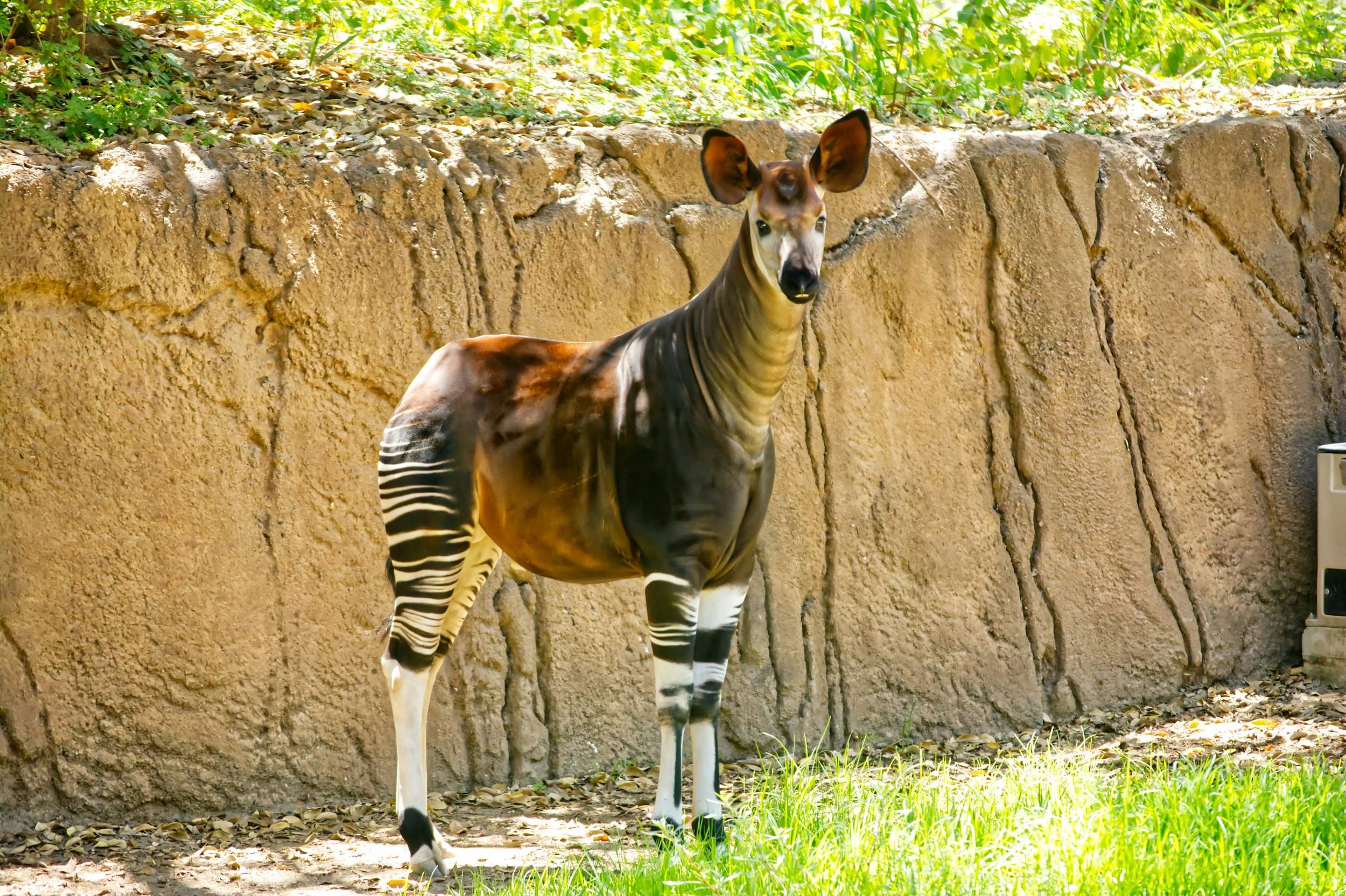
Is it a Zebra or a Giraffe? It’s an Okapi!
Is it a Zebra or a Girafe?
Written By: Sitara Nair
Found exclusively in the dense rainforests of the Democratic Republic of the Congo, okapis have fascinated scientists and wildlife enthusiasts alike. Their secretive nature and distinctive appearance distinguisehes them from other mammals, making them super interesting!
Appearance
On first impression, an okapi may strike you as a giraffe due to its long neck and stance, but its overall structure is much more compact. The okapi has a deep brown color that camouflages it in the forest shadows, and its legs have horizontal white stripes. The stripes are believed to let young okapis to stay concealed and to confuse predators in the filtered light of the rainforest. Additionally, okapis have large, watchful ears and a long, elastic tongues, a which allows them to select leaves and buds from the forest canopy. They can weigh up to 660 pounds, and are 8 feet in length, five feet tall making them pretty big!
Habitat
Okapis are indigenous to the dense, tropical rainforests the Democratic Republic of the Congo. The region provides a unique, wet habitat with thick vegetation that not only offers food but also natural shelter from predators. The remote nature of their habitat has contributes to the okapi’s reputation, as these animals are rarely seen by humans. Despite the shelter provided by the forest, the okapi’s home is increasingly under threat from logging, mining, and agricultural expansion, but more on their endangerment later.
Behavior and Diet
Okapis are quiet, solitary animals that search for food when it's cooler, early in the morning and late in the afternoon. They eat leaves, fruits, ferns, and bark. Their long, bendy tongue helps them grab even tiny leaves from high places, and their great hearing and camouflage help keep them safe. They eat up to 60 pounds of food DAILY, and have four stomachs to digest all that food! Okapi behavior is very timid, as they are named “elusive” and enjoy to spend their time alone, but they do sometimes get into small groups to eat, groom, and play.
Endangerment
Okapi is currently listed as Endangered and is seriously threatened by human activity. Their habitat destruction through logging and mining, as well as being hunted for meat and hides, has resulted in a sharp decline in population. Political unrest in most of the Democratic Republic of the Congo also lacks effective conservation. Habitat conservation, anti-poaching activities, and community education are now focused on protecting this amazing animal.
Conclusion
Okapis are more than a unique animal, they are absolutely vital to the rainforest ecosystem! Preserving these animals is preserving a part of the natural world that is mysterious and full of beauty. With continued research and collective conservation efforts, there is hope that future generations will also be able to enjoy the okapi in its native forest home.
References
National Geographic. “Okapi, Facts and Photos.” National Geographic, 2 Mar. 2020, www.nationalgeographic.com/animals/mammals/facts/okapi.
“Okapi | Mammal.” Encyclopedia Britannica, www.britannica.com/animal/okapi.
San Diego Zoo. “Okapi | San Diego Zoo Animals & Plants.” Sandiegozoo.org, 2019, animals.sandiegozoo.org/animals/okapi.
https://denverzoo.org/animals/okapi/
